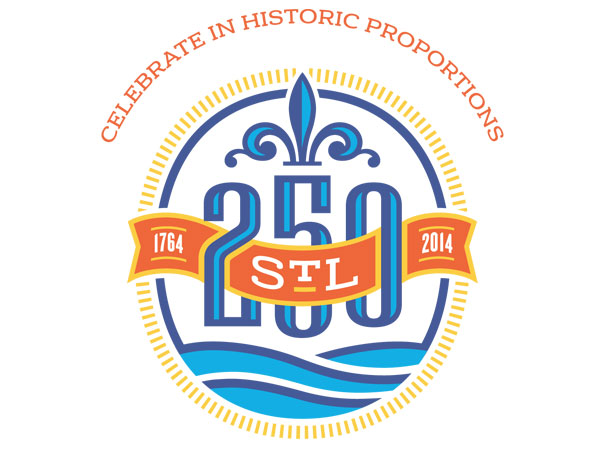>>What brought your family here?
In celebration of St. Louis’ 250th birthday, Town & Style is compiling and sharing tales from readers about family histories in St. Louis. To share your story, email us at tellus@townandstyle.com.
My great-grandfather, Ernest Charles Boulicault, came to the U.S. from Dijon, France, in 1875 at the age of 17. He already had some family here and he was to join them and work with them. His uncle, Claude-Justine Boulicault, had a son named Marcel who became an architect and designed several buildings in and around the St. Louis area, as well as in Jefferson City. His buildings include the Louis H. Kohler Building addition to the St. Louis State Hospital (demolished in 1998) and the St. Louis Fire Department Headquarters. Marcel resided in Brentwood and passed away in 1962.
—Susan Hale-Glass
Herman Heinrich Jacob and Annie Wirth were German immigrants. Herman landed in New York at the age of 19 and made his way to St. Louis, where others from his town of Herford, Westfalen, in northern Germany had settled before him. Herman was a cigar maker, utilizing the trade that he had learned in his own village. He sold his cigars to the neighborhood taverns, stores and restaurants.
He met Annie Wirth, a girl from southern Germany in Knittlingen, Württemberg, who was living on Lemp Avenue. They married at Zion German Evangelical Church on Benton Street. In July 1981, 100 years after Herman immigrated, his grandson, Robert Arthur Jacob, spoke at the opening of the first Ronald McDonald House in St. Louis. Robert was the treasurer of the organization.
—Cindy Jacob
My father’s uncle, Ben Landesman, was an artist in Vienna and came to St. Louis to paint murals for the World’s Fair in 1904. Shortly thereafter, my grandmother, Pauline Landesman (Ben’s sister), arrived and married Max Hirschfeld. Together they opened their first antiques and fine arts store in the Musical Arts Building at Boyle Street and Olive Boulevard in 1931.
My father, Richard, took over the business. At the time, it was the cultural center of St. Louis. Visiting celebrities, including Nelson Eddy, Bert Lahr and Bing Crosby, would frequent the area. In the years that followed, the area became famous as an antiques center and as a bright and sophisticated setting. The Landesman cousins, who eventually opened The Crystal Palace, attracted celebrities, including soon-to-be-stars such as Woody Allen, the Smothers Brothers and Alan Arkin. The Hirschfelds were the last of the antiques dealers to leave Olive Street and move west, later settling at Maryland Plaza in the Central West End.
—Mark Hirschfeld
In 1841, when my great-great-uncle and aunt, Joseph and Martha (Allan) Gartside, immigrated to St. Louis from England, he may have already set his sights on the coal industry. Within two decades, Joseph Gartside became the largest coal mine operator in the West and founded Gartside Coal and Towing Company.
Joseph was a member of the Merchants’ Exchange of St. Louis, whose members financed the construction of Eads Bridge. When the bridge opened to the public, he was the first person to cross from west to east. He decorated his bay horses and coal wagon with flags and streamers, paid the 50 cents toll, and cracked his whip as he headed his wagon onto the new bridge.
When he died, Joseph’s obituary in the St. Louis Globe-Democrat was titled, ‘Death of Joe Gartside: The Great Coal-Miner Gone Where Strikes Are Unknown.’ He was described as one of St. Louis’ most enterprising and energetic citizens. The ‘Coal King,’ as the paper dubbed him, was laid to rest at Bellefontaine Cemetery.
—Margie Kraft Kindt
In 1888 at the age of 17, my grandfather, Joseph Ackfeld, arrived in St. Louis from Wadersloh, Germany. An intelligent and industrious young man, he started a grocery store on Old Manchester Road, which is now S. Vandeventer Avenue. He was also a partner in the construction of homes in south St. Louis City.
He married and moved his young family to Shrewsbury, where he became the first mayor, serving from 1920 to 1924. He made a career change to banking, real estate and insurance. To avoid a run on his small Old Orchard Bank, he merged it with Webster Grove Trust right before the Great Depression. He then held his clients’ home loans through the Depression so they would not be foreclosed. He passed away in 1954, and I remember people who attended his wake telling me how he held their homes for them during the financial crisis.
—Cheryl O’Neal
During a long career in construction, he worked on the Old Post Office, Grant’s Farm, the river bridges and dams, and many city landmarks. After he got married, he transformed into a respectable citizen with a farm in St. Charles County and a house in the city. He even became a Mason. My siblings and I grew up in our two-family brick flat in Baden and often went to the confectionery for penny candy, roller-skated on the sidewalks, walked to Woolworth’s on Broadway, and rode streetcars downtown to watch the VP Parade.
—Patricia Newell Smith
Complied by Stephanie Zeilenga
